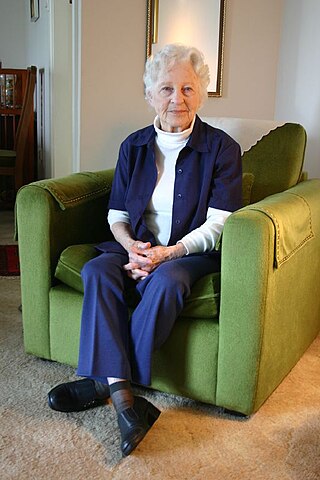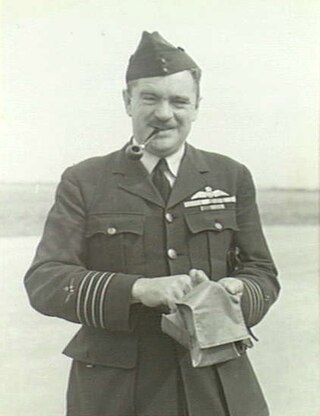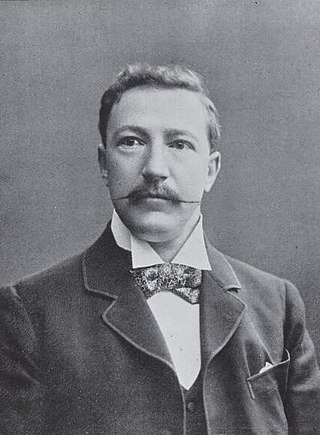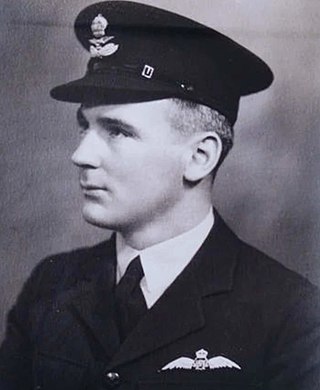Related Research Articles

Sir Charles Edward Kingsford Smith, nicknamed Smithy, was an Australian aviation pioneer. He piloted the first transpacific flight and the first flight between Australia and New Zealand.

Nancy Bird Walton, was a pioneering Australian aviator, known as "The Angel of the Outback", and the founder and patron of the Australian Women Pilots' Association.
The Australian Cartoonists' Association (ACA) is the Australian professional cartoonists' organisation and was established on 17 July 1924 as the Society of Australian Black and White Artists. It was the first association of newspaper artists in the world.
Royal Melbourne Golf Club is a 36-hole golf club in Australia, located in Black Rock, Victoria, a suburb in southeastern Melbourne. Its West and East courses are respectively ranked number 1 and 6 in Australia. The West course is ranked in the top-five courses in the world. Founded 133 years ago in 1891, it is Australia's oldest extant and continually existing golf club. Unlike many metropolitan golf venues, The Royal Melbourne Golf Club has a capacity for 15,000 spectators.

Jean Ethel Burns was an Australian aviator. She was the first Australian woman to parachute from an aeroplane over Australia and held the title of being the youngest female pilot in Australia for 15 years.

Sir Thomas Walter White, was an Australian politician and pilot in the First World War. In 1914 he became one of the first airmen trained for the Australian Flying Corps (AFC), and the following year he was among the first AFC members to see action when he was deployed to the Middle East with the Mesopotamian Half Flight. After carrying out several missions behind Turkish lines, he was captured in November 1915 but escaped in July 1918. White was awarded the Distinguished Flying Cross and twice mentioned in despatches for his war service. He married Vera Deakin, a Red Cross worker and daughter of former Australian prime minister Alfred Deakin, in 1920.

Air Vice-Marshal William Hopton Anderson, was a senior commander in the Royal Australian Air Force (RAAF). He flew with the Australian Flying Corps in World War I, earning the Distinguished Flying Cross and the Belgian Croix de guerre for his combat service with No. 3 Squadron on the Western Front in 1917. The following year he took command of No. 7 (Training) Squadron and, later, No. 3 Squadron. Anderson led the Australian Air Corps during its brief existence in 1920–21, before joining the fledgling RAAF. The service's third most-senior officer, he primarily held posts on the Australian Air Board in the inter-war years. He was appointed a Commander of the Order of the British Empire in 1934, and promoted to air commodore in 1938.

Clare Grant Stevenson, AM, MBE was the inaugural Director of the Women's Auxiliary Australian Air Force (WAAAF), from May 1941 to March 1946. As such, she was described in 2001 as "the most significant woman in the history of the Air Force". Formed as a branch of the Royal Australian Air Force (RAAF) in March 1941, the WAAAF was the first and largest uniformed women's service in Australia during World War II, numbering more than 18,000 members by late 1944 and making up over thirty per cent of RAAF ground staff.

Air Commodore Francis William Fellowes (Frank) Lukis, CBE was a senior commander in the Royal Australian Air Force (RAAF). A veteran of World War I, he first saw combat as a soldier in the Australian Imperial Force at Gallipoli. In 1917, Lukis transferred to the Australian Flying Corps and flew with No. 1 Squadron in the Middle East, where he was twice mentioned in despatches. A member of the Australian Air Corps following the war, he transferred to the fledgling RAAF in 1921, and became the first commanding officer of the newly re-formed No. 3 Squadron at RAAF Station Richmond, New South Wales, in 1925.

Air Vice Marshal Henry Neilson Wrigley, CBE, DFC, AFC was a senior commander in the Royal Australian Air Force (RAAF). A pioneering flyer and aviation scholar, he piloted the first trans-Australia flight from Melbourne to Darwin in 1919, and afterwards laid the groundwork for the RAAF's air power doctrine. During World War I, Wrigley joined the Australian Flying Corps and saw combat with No. 3 Squadron on the Western Front, earning the Distinguished Flying Cross; he later commanded the unit and published a history of its wartime exploits. He was awarded the Air Force Cross for his 1919 cross-country flight.

No. 4 Elementary Flying Training School was a Royal Australian Air Force (RAAF) pilot training unit that operated during World War II. It was one of twelve elementary flying training schools employed by the RAAF to provide introductory flight instruction to new pilots as part of Australia's contribution to the Empire Air Training Scheme. No. 4 EFTS was established in January 1940 at Mascot, New South Wales, and initially operated in conjunction with civilian flying organisations based at Mascot and Newcastle. The school was disbanded in April 1942, and its operations transferred to No. 6 Elementary Flying School at Tamworth.

Air Vice Marshal Allan Leslie Walters, CB, CBE, AFC was a senior commander in the Royal Australian Air Force (RAAF). Born in Victoria and raised in Western Australia, he graduated from the Royal Military College, Duntroon, before transferring to the RAAF in 1928. He was one of the service's leading flying instructors and aerobatic pilots between the wars, and was appointed to his first squadron command in 1937. Over the course of World War II, Walters led No. 1 Squadron in Singapore, No. 1 (Fighter) Wing in Darwin, Northern Territory, No. 72 Wing in Dutch New Guinea, and Northern Command in Papua New Guinea. He was decorated with the Air Force Cross in 1941 for his work with No. 1 Squadron, and mentioned in despatches in 1944 for his service with No. 72 Wing.

Donald Alaster Macdonald was an Australian journalist and nature writer, writing under the pen names including 'Observer' and 'Gnuyang' (gossip). He was considered one of Australia's widely known journalists, and is in the Melbourne Press Club's Australian Media Hall of Fame. He was credited with making 'Australian natural history and botany popular interests'.

No. 1 Elementary Flying Training School was a Royal Australian Air Force (RAAF) pilot training unit that operated during World War II. It was one of twelve elementary flying training schools employed by the RAAF to provide introductory flight instruction to new pilots as part of Australia's contribution to the Empire Air Training Scheme. The unit was established in November 1939 as No. 2 Flying Training School at Melbourne, Victoria. It was relocated to Parafield, South Australia, in December 1939 and renamed No. 1 EFTS the following month. Training activities relocated to Tamworth, New South Wales, in May 1944; the school was disbanded in December that year.

Sir Hugh Robert Denison KBE, originally Hugh Robert Dixson was a businessman, parliamentarian and philanthropist in South Australia and later New South Wales. He was a member of the South Australian House of Assembly from 1901 to 1905, representing North Adelaide (1901-1902) and Adelaide (1902-1905). Outside of politics, he was involved in his family's tobacco business, a forerunner of the British-Australasian Tobacco Company, was involved with a number of newspapers, and founded the Macquarie Broadcasting Services Pty Ltd radio network. He changed his surname by deed poll in 1907 to avoid confusion with his uncle Sir Hugh Dixson.
Early Australian female aviators were generally active since 1927 when it became possible for an Australian woman to hold a pilot's licence and fly within Australia. Women had participated in gliding, or taken a licence overseas, but they had not been permitted to fly a plane under licence within Australia. The first Aero Club in Australia was established in 1915.
Millicent Maude Bryant was an early Australian aviator. She was the first woman to earn a pilot's licence in Australia, Pilot's Licence No. 71, in 1927. She was also first to receive her pilot's licence in the Commonwealth, outside Britain.

Betty Kirby-Green (1906–1992) was an adventurer and pilot with multiple aviation records.

George Henry "Harry" Purvis, AFC was an Australian pioneer aviator, engineer, airline pilot, air-force pilot and author. He was the engineer responsible for maintenance of the famed Southern Cross aircraft. Purvis often flew as co-pilot with Sir Charles Kingsford Smith and was the last person to fly the Southern Cross. Purvis was co-pilot to P. G. Taylor on the first flight across the lower Pacific Ocean from Australia to South America, landing in Chile in 1951.
The Australian Women Pilots' Association (AWPA) was founded on 16 September 1950 by Australian aviation pioneer, Nancy Bird-Walton.
References
- ↑ "Australian Women's Flying Club (AWFC) in Australia during WW2". www.ozatwar.com. Retrieved 26 December 2016.
- ↑ "HerStory Archive | Pioneer Women Hall of Fame". pioneerwomen.com.au. Archived from the original on 28 August 2018. Retrieved 26 December 2016.
- ↑ Thomson, Joyce Aubrey (1991). The WAAAF in Wartime Australia. Melbourne, Australia: Melbourne University Press. p. 28.
- ↑ "Women Also Serve - Helps mend soldiers' clothes". The Australian Women's Weekly. 30 December 1939. Retrieved 26 December 2016– via Trove.
- ↑ "Thematic Study: World War II Aerodromes and associated structures in New South Wales" (PDF). New South Wales Heritage Office. November 2001. Retrieved 26 December 2016.
- ↑ "Reveille March 1981 — The Returned and Services League of Australia New South Wales Branch". reveille.dlconsulting.com. Retrieved 26 December 2016.
- ↑ "Mrs. Casey Flies Own Plane To Sydney". The Sydney Morning Herald. 14 September 1950. Retrieved 26 December 2016– via Trove.
- ↑ "The 99 News" (PDF). The International Women Pilots Association. January–February 1981. Retrieved 26 December 2016.